Space Data Association (SDA)
This time last year, I had just been appointed as the chairman of the Space Data Association (SDA) from Inmarsat’s Mark Dickinson. As I remarked at the time, I was very aware that I had some big boots to fill. Of course, I was not quite prepared for just what 2020 would bring to us all, making everything we do all the more challenging. I am thankful that the Space Data Center (SDC) was able to carry on regardless throughout all the trials and tribulations of 2020, something that is naturally critical to the safe use of space.
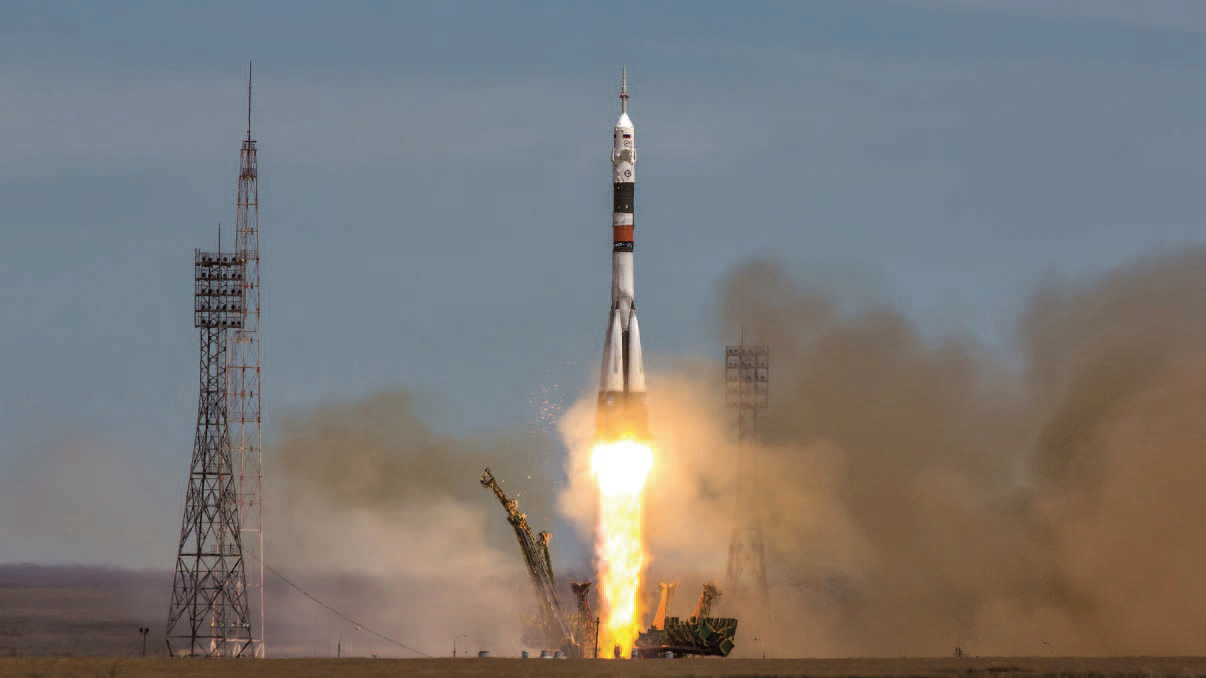
At the end of a very surreal and challenging year, one of the most important questions for me is: how has 2020 impacted space situational awareness and safety of flight?
COVID Delays LEO Launches
This year we were expecting a large number of LEO launches, following a sudden rise in both launches and planned launches last year. While they have not stopped altogether, many have been delayed. Recent statistics from NSR clearly show that launch market revenues are down this year when compared to last year. From a pure Space Situational Awareness (SSA) point of view, perhaps that has bought us some time to find better ways to fix the problem before the skies get any more congested.
Despite that, I am pleased to see that the outlook looks positive for the LEO operators making up for lost time. Already this year, SpaceX has launched payloads into orbit for the 100th time. OneWeb, now owned by a UK government consortium and Indian conglomerate Bharti Global, is planning to restart launches in December of this year. Many more LEO satellites will be launched in the coming years, with the aim of enabling next-generation and high capacity services. However, the challenge remains that with so many satellites due to be launched over the coming years, this will have a knock-on effect for SSA and risk of collision, potentially in all orbital regimes.
SDA members today account for more than 270 GEO satellites (> 50 percent of active satellites) and more than 400 non-GEO satellites. Although we already have members operating in LEO, which are providing data into the SDC, we have been actively engaging others to encourage data sharing with as many satellite operators as possible, in all orbital regimes.
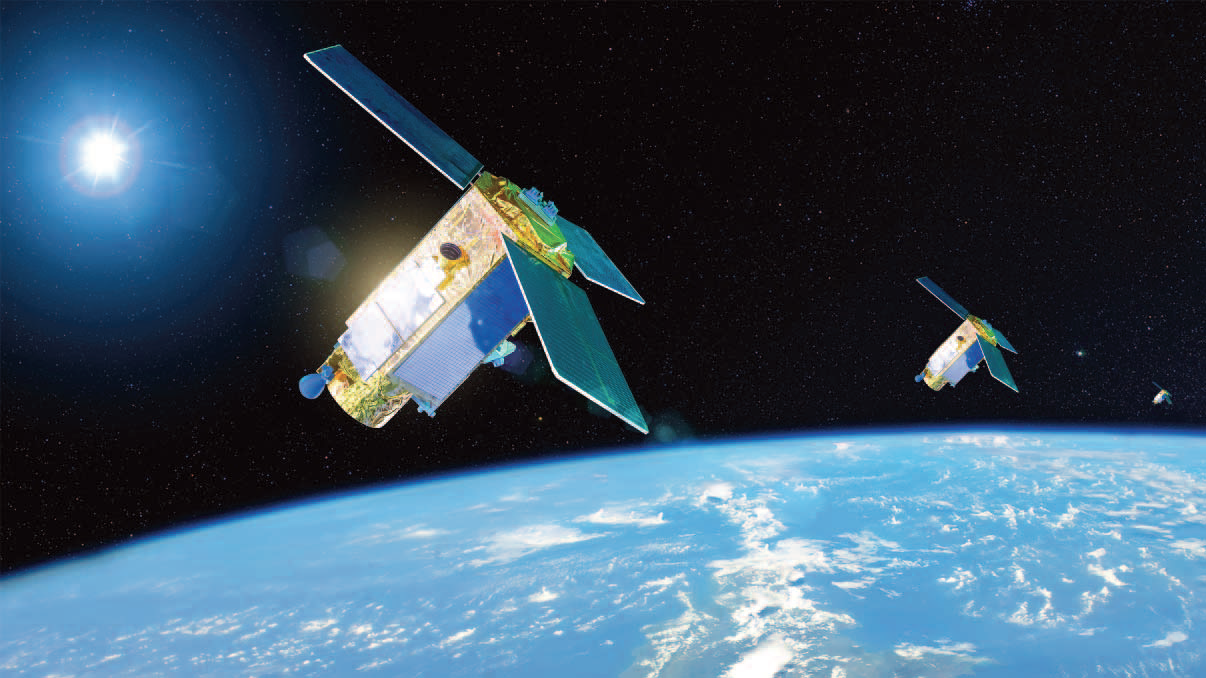
This year, we also worked together with Analytical Graphics Inc. (AGI), our technology partner for the SDC, to present at the Ascend conference. AGI had worked with a number of operators and other data providers to put together a representation of just how additional observation data can improve the orbit prediction accuracy and compare it to required accuracy to meet a probability of collision threshold. It also highlighted just how critical it is to have planned maneuver information to enable us to accurately model the satellite trajectory, in particular for satellites performing frequent low thrust maneuvers (e.g., 2 to 4 times per day).
Debris Continues to Accumulate
According to NASA’s orbital debris program office, as of January 1, 2020, the volume of debris in Earth’s orbit exceeded 8,000 tons. It is clear that debris remains a challenge and it is something we have not yet solved to overcome. The impending mega constellation launches has the potential to make the situation even worse. Add in the fact that the challenges with ensuring end of life procedures are followed, and we have a growing problem that needs to be resolved sooner, rather than later.
At the close of 2019, the European Space Agency announced ClearSpace-1, the first space mission to remove an item of debris from orbit. This mission is planned for launch in 2025. Initiatives such as this will be crucial to removing debris already in space. ESA also recently posted an interesting piece on the current state of debris, which shows the problem has been steadily increasing, with debris-creating events becoming more common. On the positive side, it also highlights that more space actors are trying to comply with end of satellite life guidelines.
If we are going to tackle the problem of debris, it is certain we need a multi-faceted approach. Increasing awareness and responsibility is an important step in the right direction, as is ensuring good SSA, adherence to end-of-life guidelines, and new ways to remove the debris already created. Together, all of those areas can help us ensure a much cleaner, safer space environment for all.
Satellite Operators Looking to Cut Costs
It is not surprising that this year many operators and other companies across the entire satellite ecosystem have been looking for ways to cut costs to get through a challenging period. Preventative measures, such as SSA, are often the first to be cut back as they do not directly impact the profit margin. This starts a whole risk versus reward conversation. At the same time, as membership and data contribution has grown, we have found that the costs of running the SDC have been gradually increasing. We are continually assessing our finances, to ensure that we are able to keep costs to a minimum without compromising on the quality and reliability of the service we are providing.
This was even more important this year with many of our members facing financial pressures caused by COVID. Fortunately, we were able to reduce our costs significantly and pass that onto our members. We have removed the scaling per satellite fee structure, giving members just a single, flat fee, depending on membership category.
The SDA Flight Safety Services Notch 10 Years
It has been 10 years since the Space Data Association became operational through the SDC and a lot has changed in that time. Over the past year, we have been reflecting on some of those significant changes and overall it is reassuring to see that it has risen up the agenda and dramatically improved since the inception of the SDA.
What is next? At the SDA, we believe that national governments should now be stepping up to take responsibility for providing timely, actionable, and accurate SSA information and related space traffic management services for safety of flight, ideally through multi-national governmental cooperation.

In Europe, there are already a number of government-run initiatives aimed at improving SSA. This includes the European Space Surveillance and Tracking (EUSST), established by the European parliament in 2014 to ensure the long-term availability of the European space environment. This is a great example of inter-governmental cooperation with recent additions including Portugal, Romania, and Poland. It is a free to use service that does a good job at complementing the work we are doing within the SDA, but it is not quite there in terms of being able to replace the SDA.
This year, we have seen some developments in the US space policy. In 2018, the US government issued Space Policy Directive 3 (SPD-3), a document that established a policy to transfer responsibility to the US Department of Commerce (DoC) as a focal point for the US collision avoidance service presently being provided by the US Department of Defense (DoD).
Also this year, following a number of other developments within the US government, including the establishment of the US Space Force, we observed increasing activity to implement SPD-3. Together with AGI, we have continued working closely with the US government and are fully committed to helping support any activity with the DoC.
The Future of SSA
2020 has been a challenging year for many and has certainly impacted the satellite industry, along with many other Industries. However, satellite remains important, if not even more so in these challenging times, in order to keep the world connected. As we move into 2021, I am certain we will see more launches and more services than ever before. This is great news for the industry but we need to ensure we are ready with the right tools in place to keep space safe and reliable for everyone.

In the long-term, we believe that SSA and STM should be government run and funded, as opposed to relying on commercial operators. While there is a way to go, it has been reassuring to see things beginning to move in the right direction over the past year. If we do move towards a government option, it is vital that it will be suitable for all operators, globally, and deliver at least the same level of service and accuracy that the SDC provides. I look forward to SDA’s role in enabling that transition.
www.space-data.org/sda/

Author Pascal Wauthier is the Chairman of the Space Data Association and the Space Operations Senor Vice President at SES. During his 29 years career at SES, Pascal led the Flight Dynamics section to become a center of excellence in safe co-location operations and management of risk of close approach with other objects, as well as in orbital software development and transfer orbit mission design.
Spaceflight Inc.
This year has been unexpected and unique for industries, companies and individuals alike. At the start of the year, Spaceflight was scheduled to execute the most missions the company had ever done in one year, with several scheduled for the spring of 2020. To no one’s surprise, the year didn’t exactly unfold as expected.

However, despite the challenges and sometimes unbelievable global circumstances, this has been a significant year for Spaceflight. In 2020, Spaceflight achieved key business milestones, including the completion of the Mitsui acquisition, and debuted innovative programs and services, such as the Sherpa-NG (next generation) program and the Book My Launch online portal, both of which will benefit customers and provide unmatched launch flexibility.
Spaceflight Inc. Acquired by Mitsui
At the beginning of this year, Spaceflight Inc.’s parent company, Spaceflight Industries, signed a definitive share purchase agreement with Mitsui & Co., Ltd., in partnership with Yamasa Co., Ltd. to sell its satellite rideshare launch business. Following regulatory clearance in June of 2020, the acquisition of Spaceflight Inc. was finalized.
This acquisition presented an important opportunity for Spaceflight to further invest and expand our commercial and governmental rideshare launch services. The new autonomy and support from an established, global business provides our company with the independence and resources to focus on innovating and creating new service offerings that will improve our customers’ launch experience. Spaceflight is dedicated to providing comprehensive launch services and providing smallsat companies with unmatched flexibility through its rideshare and mission management services.
The Debut of Sherpa-NG
A key initiative for Spaceflight in 2020 was the debut of our Sherpa-NG program. This is one of the many flexibility initiatives we launched and were able to direct our attention to following the acquisition.
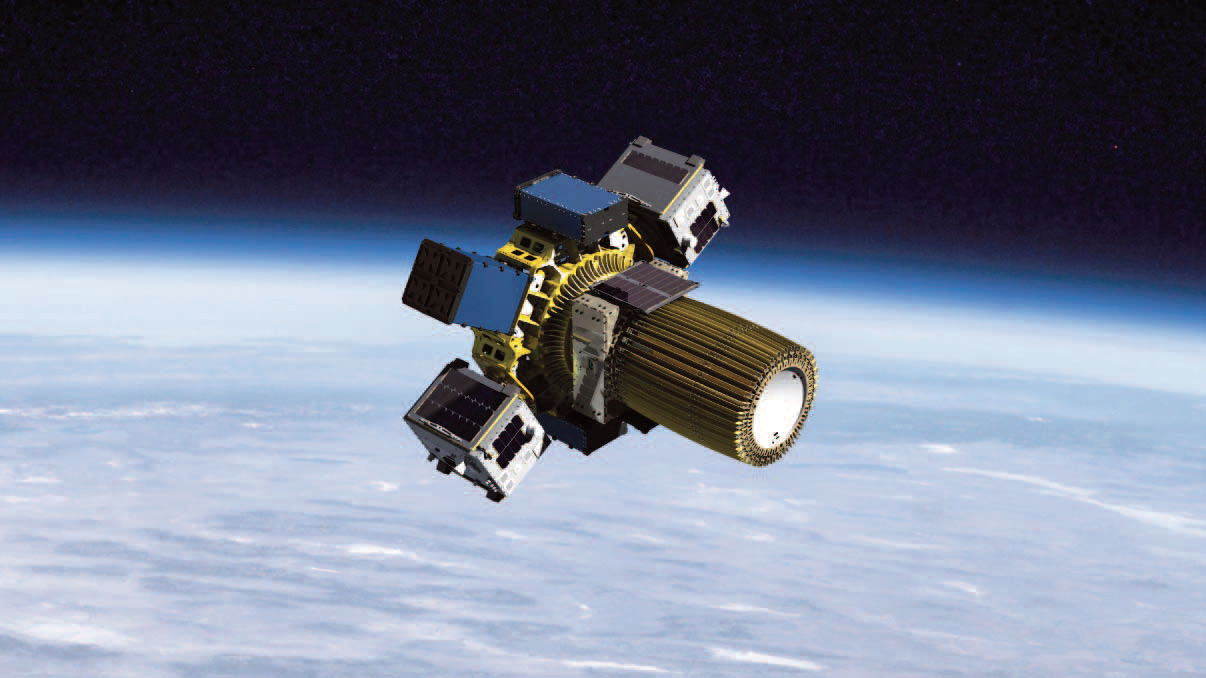
Artistic rendition of the SherpaFX OTV, image is courtesy of the company.
In-space transportation is essential to getting spacecraft delivered to orbit exactly when and where they need to be. However, more often than not, an ideal launch might not exist for smallsat companies. We saw an opportunity to offer customers a truly unique and valuable launch service by creating an OTV program with a portfolio of vehicles.
Sherpa vehicles take advantage of low cost rideshare launch options available in the market and drop the cost per port even lower by integrating multiple spacecraft onto one port. The vehicle also provides unique benefits, including high-definition telemetry data to support the identification process, increased flexibility with the ability to easily move the entire OTV from one launch vehicle to another or remanifest individual satellites. Finally, it offers the ability to execute in-space transport to deliver customer spacecraft to an exact orbital destination. To meet the various needs of smallsat companies, the Sherpa-NG program contains three different vehicles.
• Sherpa-FX is capable of executing multiple deployments, providing independent and detailed deployment telemetry, and flexible interfaces to accommodate different separation systems, minimizing development timelines while maximizing flight and schedule reliability and mission assurance. This is scheduled to debut on a SpaceX rideshare mission no earlier than December 2020.
• Sherpa-LTC features a high-thrust, high specific impulse (LSP) bi-propellant, green propulsion subsystem integrated seamlessly within the available space of the original free flyer. This propulsion technology from Benchmark Space Systems provides a low cost, rapid orbital transfer for many sizes of small spacecraft. This Sherpa is scheduled to fly the second half of 2021.
• Sherpa-LTE will include a low thrust, long duration propulsion system from Apollo Fusion, improving radiation tolerance, with the capability to deliver customers to a GEO, Cislunar or Earth-escape orbits. This vehicle provides a low-cost alternative to purchasing full direct-inject launch vehicles. The Sherpa- LTE is targeted to fly mid-2021.
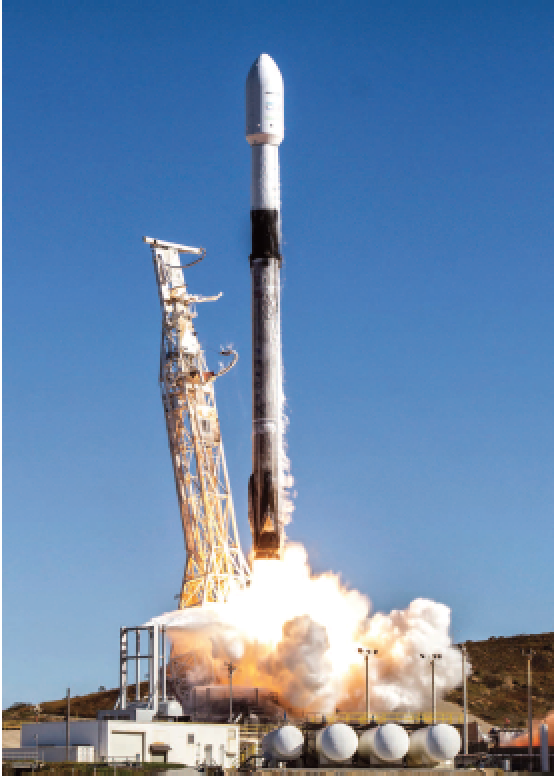
low-cost launch options and a variety of capabilities to support customers’ mission needs.
Established Key Partnerships
Driven by our commitment to offer the most launch options to smallsat customers across the industry, we signed multi-launch agreements (MLA) with SpaceX and Firefly Aerospace. The SpaceX agreement secures capacity for Spaceflight on SpaceX missions through 2021, providing launch schedule assurance to smallsat customers needing frequent, reliable, and cost-effective launches to Sun-Synchronous Orbit (SSO).
Additionally, we signed a MLA with our return customer, Hawkeye 360. Under the agreement, we will provide capacity, engineering, and mission management services to launch HawkEye 360’s Cluster 4, 5, and 6 of its radio frequency mapping satellites.
Spaceflight also secured key partnerships with Benchmark Space Systems and Apollo Fusion Inc. to provide propulsion systems for the Sherpa-LTC and the Sherpa-LTE vehicles. These partners provide Spaceflight with reliable, trusted propulsion systems to deliver on-orbit transportation to customers.
New Customer Platforms Introduced
While the majority of Spaceflight’s work is focused on the process of integration and launching satellites, we are always seeking opportunities to improve our customers’ experience throughout the launch process. As such, we created several online initiatives to provide a seamless and simple customer launch process, including a reservation portal and a mission management platform.
Book My Launch allows customers to book a satellite launch completely online much like booking an airplane flight, while Mission Control provides customers with real-time status updates and milestone progress of their missions so they have easy access to information at every step of the launch campaign.
Leaning into 2021
Despite many schedule changes in 2020, Spaceflight has executed five missions already this year (with another planned) on four different launch vehicles in four different countries, taking nearly 50 smallsats to orbit. And, as the industry begins to see launch cadence pick up and a degree of normalcy return, we anticipate 2021 will be an even more active year for us, with several Sherpa launches.

While the year was unconventional and challenging in many ways, the accomplishments our team at Spaceflight achieved in 2020 will provide a strong foundation for the coming year and enable us to deliver unprecedented launch flexibility to smallsat customers.
spaceflight.com

Author Curt Blake is the Chief Executive Officer and President of Spaceflight. He has more than 25 years of executive experience in high-growth technology industries. Under Curt’s leadership, Spaceflight has successfully negotiated the launch of more than 300 satellites across 34 missions on behalf of its customers. Since the acquisition by Mitsui, and under Curt’s leadership, Spaceflight introduced a wide array of flexible launch initiatives, including its Sherpa-NG (next-generation) program, new web portals to simplify the booking process and an identification program. Additionally in 2020, Curt led the company’s efforts to secure a Multi-Launch Agreement with SpaceX, adding capacity and launch options to Spaceflight’s already diverse launch portfolio. In 2019, the Spaceflight team executed nine successful launches, the most rideshare launches Spaceflight had performed in one year. Prior to moving into his role as CEO and president, Curt served as Senior Vice President and General Counsel for Spaceflight.
Scottish Space Leadership Council (SSLC)
Along with spectacular views, Scotland’s sparsely populated northern coast offers rare, unobstructed launch corridors to valuable polar and sun-synchronous orbits. With a rich industrial and engineering heritage that has seen the country produce everything from ships to spaceships in recent decades, as well as world-leading universities, it has transpired that Scotland’s socio-economic landscape is also perfectly suited to supporting a thriving space sector.
Consequently, Glasgow-based firms that have been designing and manufacturing smallsats for years — with more than 100 Scottish-built satellites launched to date — have been joined by a rich variety of small to medium-sized Scottish space businesses that now cover the full space value chain. This includes everything from launch vehicle developers and spaceport locations to companies retrieving, analysing and interpreting space data, as well as a whole host of supply chain companies in between. Despite the proactive, entrepreneurial atmosphere that prevails in the Scottish space sector, until recently these businesses lacked a unified body to voice and address industry-wide concerns and share opportunities.
Recognizing the need for a structured body to connect and shape collaboration within the Scottish and wider UK space sector, industry leaders founded the Scottish Space Leadership Council (SSLC) in 2016. The SSLC has developed year-on-year since then, establishing itself as a collegiate platform supporting a Scottish space sector that is projected to become a £2 billion industry by the end of the decade and is set to play a key role in the wider UK ambitions.
Despite an unprecedented year filled with global challenges, 2020 has proven to be the SSLC’s strongest year yet. Working within and adapting to the restrictions of COVID- 19, the SSLC has facilitated the establishment of an industry consensus on launching from UK soil, creating a network of spaceports, and encouraging the establishment of competitive and equitable space legislation.
An early success this year was a series of SSLC led workshops addressing trajectory and range analysis for UK launch sites, held with the aim of ensuring more detailed collaboration between space sector organizations including developing UK launch sites, launch vehicle companies and range operators, as well as regulators such as the Civil Aviation Authority (CAA), the Ministry of Defence and the UK Space Agency.
The workshops also provided a wide range of UK space sector stakeholders with a relevant and timely platform to voice aspirations and concerns with legislators as they worked towards finalizing the draft regulations that balance safety and environmental concerns with the competitiveness required for a thriving UK space sector. The workshops also provided basis for five working groups which are now providing a collective view across a number of key topics, including Safety and Insurance, and which contributed to the SSLC sectoral response submitted to the UKSA, CAA and Department for Transport in response to the Space Industry Act consultation.
The feedback from the UK Space Sector was uniformly positive and the SSLC is therefore continuing to explore the whole regulatory environment with the workstreams and a future round of workshops to provide additional support to the Government’s revisions to the regulations as they move towards formalization and implementation.
Also resulting from the July workshops, the SSLC facilitated the formation of and now chairs the UK Spaceports Alliance, an initiative started by Scotland’s spaceport sites and now encompasses all of the launch sites across the wider UK. A collaboration Concordat was signed between three vertical launch sites — Shetland Space Centre, Space Hub Sutherland and Spaceport 1 — and two horizontal launch sites, Glasgow Prestwick Spaceport and Machrihanish Airbase Community Company in Argyll. South of the border, two further ‘air launch’ initiatives at Spaceport Cornwall and Llanbedr Airfield are in detailed discussions about signing the Concordat to move on from partner status to formally join the initiative.
With the Spaceports Alliance, support for domestic launch vehicle design and manufacture, advocacy for national engine test and flight test/integration facilities and championing Scotland’s significant strengths in data and information sciences to transform the downstream sector, SSLC is helping to forge a complete commercial space value chain. With the ability to provide smallsat launch to local and international players, Scotland and the wider UK, has the potential to transform itself into an agile, high tempo, ‘one-stop-shop’, providing services across all aspects of space sector giving Scotland and the UK ‘and edge’ in the global marketplace.
The UK Spaceports Alliance embodies the open, collaborative ethos of the SSLC, bringing together like-minded organizations to work together to deliver a successful UK Space Sector. The SSLC essentially offers a forum for representatives from industry, academia and government to discuss, promote and collaborate on common interests to support the development of the UK’s space capabilities by providing tangible outputs and demonstratable results from this collective activity. As the Council evolves, its reputation for being far more than a “talking shop” grows stronger. Whether it be highlighting Scotland’s space data capabilities, payload manufacture (more smallsats are bult in the city of Glasgow than anywhere else globally outside of California) or to highlight the potential and challenge the issues around the UK’s ability to win the international race to enable European launch, the group is taking a lead industry position in raising and debating key issues, concerns and opportunities with the UK government on key issues such as regulation, insurance and international collaborations. The SSLC is also offering a broad, open, collaborative, cross-sectoral source of industry and academic expertise to the government and its agencies to help in the development of a world-leading commercial space sector here in the UK.
Going forward, the SSLC is looking toward the challenges and opportunities of 2021. The SSLC’s New Voices initiative will create an advisory group to promote the importance of inclusivity and diversity in the UK space sector, as well as creating avenues for under-represented groups to join and enrich Scotland’s growing industry. SSLC will also strengthen its links to the Academic Space Forum to explore the future of the UK commercial space sector, building on the success which has stemmed from the commercialization of the cubesat concept. The SSLC and the ASF will be developing concepts for new space technologies, capabilities and commercial opportunities.
The SSLC is already planning a major Space Sector Environmental Challenge led workshop for 2021 to both highlight and challenge the environmental credentials of the UK space Sector. This event is designed to produce comprehensive input for the COP 26 conference in Glasgow in November of 2021 where SSLC plans to have a significant presence representing the UK Space Industry.
Another high-priority project currently underway is to formalize the Council as a legal entity, creating a solid foundation for the challenges ahead. The SSLC plans to work with strategic space marketing firm AstroAgency and liaise with Council members to create a more inclusive, diverse and connected — both locally and internationally — Scottish space cluster.
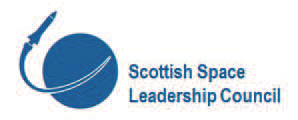
Despite the daily challenges of the COVID-19 pandemic, the SSLC has accomplished a great deal as a voluntary member organization and discovered new ways to bring the UK sector together to produce outcomes of value. There is much yet to do if the UK is to achieve its ambitious plans within this decade, but the Council is setting itself up to build upon increasingly strong foundations for another year of supporting Scotland’s growing, out-of-this-world space economy.
Working Toward a Sustainable Space Sector
With the UK Space Agency’s stated aim of capturing 10 percent of the global space market by 2030, the operational and commercial ecosystem created by the developing launch legislation will be crucial to the success or failure of the UK Space Sector’s ability to compete within the intensely competitive International launch marketplace.
The UK’s launch capability is, in turn, a fundamental factor in enabling the whole UK Space Sector to achieve its significant potential.
Low cost, flexible and timely access to orbit will be an important catalyst to achieving the ambitious levels of space sector growth, as will using the opportunity afforded only through the creation of a completely new industry to build a launch sector that develops in a manner that is consistent with a global need to minimize environmental impact.
By working to inform and support the legislative process, the SSLC aims to help position the UK as a European leader in commercial spaceflight by championing an innovative approach to environmentally conscious, sustainable launch activity from UK soil.

Author John Innes is the Chairman and Co-Founder of the Scottish Space Leadership Council and VP Technology Innovation at Leonardo MW Ltd.
Through the SSLC assessing and acting to reduce the sector’s environmental impact, as well as raising awareness of the key environmental benefits of the space sector in the fields of Earth Observation (EO) and climate modelling, Scottish launch companies can continue their work towards a more environmentally conscious offering for customers with their plans for greener propellants. The SSLC intends to build on these initial efforts to create a sustainable space sector. By establishing dialogue with leading environmental groups in 2021 and beyond, the SSLC aims to both share the environmental benefits of the space sector and receive an outside perspective on how to better minimize its impact on the environment that it ultimately seeks to protect.
ST Engineering iDirect


Connecting Remote Places on Earth
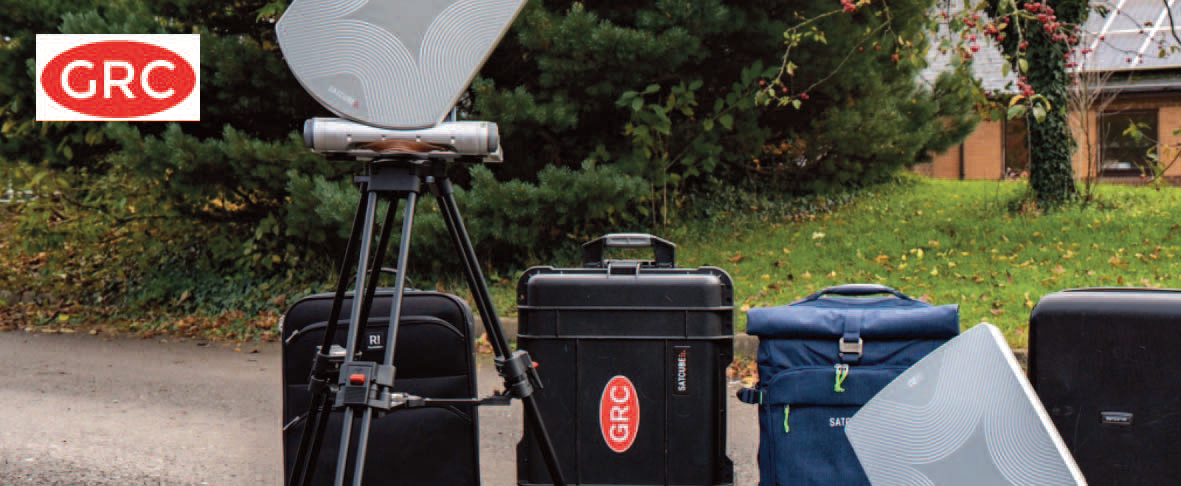
Earlier this year our Head of Cellular Backhaul and Trunking, Semir Hassanaly, presented during their Plugfest event on the importance of establishing the right business case for satellite-based cellular backhaul.
Critical Connectivity for Government
For example, Global Radiodata Communications used the iQ 200 modem for its Satcube solution that has been deployed to provide high-bandwidth, secure voice and data to medical teams. The lightweight terminal is online in less than a minute and is as simple as using a smartphone. It’s this kind of instant access to connectivity that has been so critical at this time.

ST Engineering iDirect’s iQ 200 Modem 
ST Engineering MDM9000 modem
The iQ LTE is also having an impact in the first responder sector and has been integrated by IP Access into its FUSION range to create a converged solution that automatically finds and connects to all available networks, including LTE, 4G/5G and multiple satellite networks, without user intervention. As a result, it delivers reliable data communication for several use cases where the physical path redundancy is critical.

Innovation in the Defense Sector
The MDM9000 modem (pictured above) received Wideband Global SATCOM (WGS) Certification earlier in the year which expands our portfolio of WGS-certified solutions, including the iDirect Evolution Defense platform, Tactical Hub, and 9-Series family of modems. Designed to support a wide range of fixed and mobile government and defense applications, the field-proven MDM9000 modem is now one of the most powerful DVB-S2X modems operating on the WGS constellation. Its flexibility and efficiency open up new capabilities for high-speed data links, complementing existing WGS-certified Evolution Defense Solutions.

The defense sector is a prime target for both cybersecurity threats and intentional and unintentional signal interference. With the digitalization of the battlefield has come increased risk. Security systems must therefore have the capability to predict, detect, prevent and mitigate the mix of threats that could hamper operations. Our latest Evolution 4.2.2.0 release introduces Communication Signal Interference Removal (CSIR™) technology to effectively remove signal interference and reduce noise of satellite signal emitters in real time. This can help Defense customers predict, detect, prevent and mitigate threats and vulnerabilities.
Agility in Broadcasting
We further strengthened our long-standing relationship with leading telecom provider VIVACOM with a new agreement to supply our MCX7000 modulators to facilitate additional broadcast offerings in Eastern Europe and Africa. VIVACOM, the largest telecommunications provider in Bulgaria, will use the MCX7000, a dense DVB-S2X, multi-carrier, satellite gateway, to launch new video services in Africa, in partnership with a global satellite operator. The modulators will also provide enhanced services for an existing Direct-to-Home (DTH) operator across Eastern Europe.

With the pandemic affecting live events broadcasters and SNG (Satellite News Gathering) operators were forced to learn to adapt and operate in very different circumstances. We supported our customers in their creative approaches to re-purpose SNG trucks, outfitted with our solutions, to turn them into mobile communication centers. These trucks can offer full IP capabilities and travel to wherever they are required for on-the-spot connectivity providing much needed help for aid agencies, medical staff and first responders.
We saw new interest in satellite’s ability to provide OTT services this year. There was a dramatic increase in demand for video streaming and networks were hit with massive congestion as a result of home working and business closures, negatively impacting Quality of Experience (QoE). Our solutions were used to facilitate offloading of traffic from the terrestrial backbone and to feed the Content Delivery Networks (CDNs).
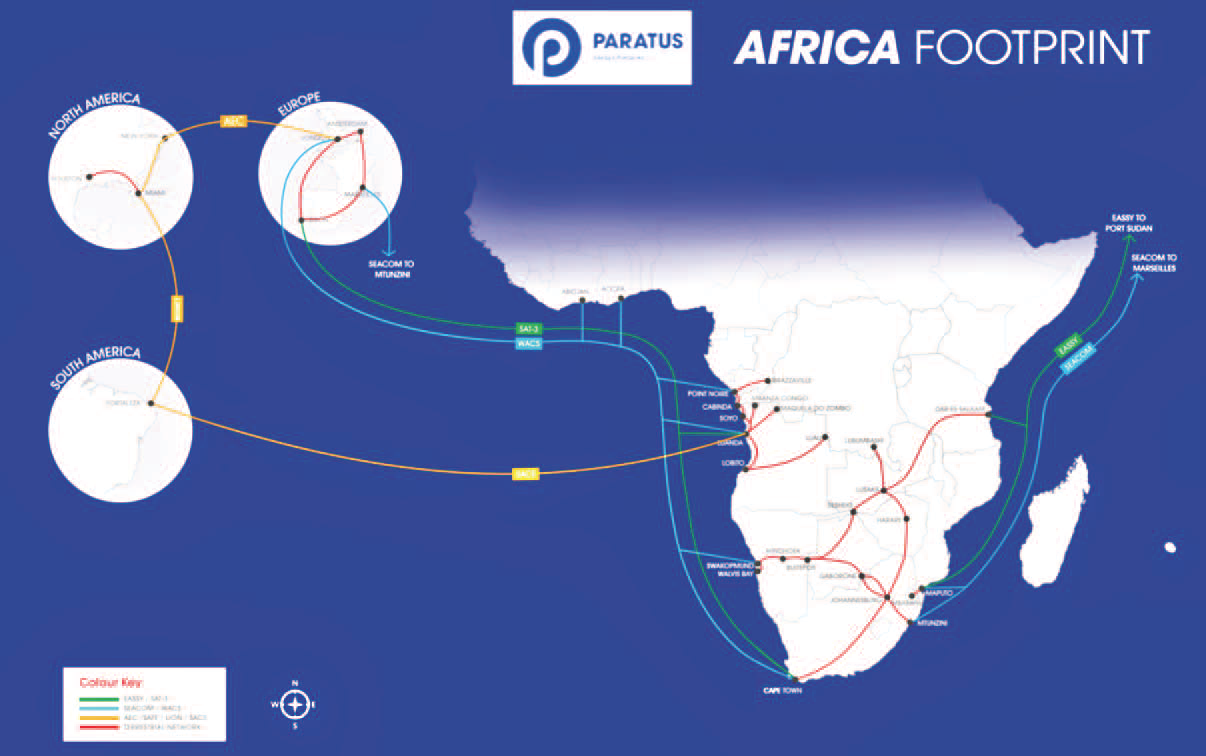
Excelling in Maritime Capabilities
Mobility is set to be an even bigger theme in 2021 due to an inexorable rise in demand for connectivity anywhere — and we have bolstered our position on the high seas with some significant agreements. Our leading mobility position and solutions that empower our customers across all mobility segments was recognized through the MSUA Company to Watch award. This was also a nod to our future vision and passion to facilitate seamless connectivity as new constellations, applications and markets emerge.
Speedcast has deployed the WTA Award-winning Newtec Dialog® platform to provide worldwide satellite broadband services for its customers. The deployment enables the service provider to respond to the rising requirement for high-speed connectivity on board cruise ships and may also be used for other vertical market segments with increasing bandwidth requirements, such as yachting, oil and gas and the enterprise market.

Evolution 4.2.2.0 is the company’s latest
defensegrade release that enhances the
Evolution Defense platform with
information assurance (IA) and cybersecurity
Already facing a daunting task of converting more than 100 maritime sites to this new technology, the team was confronted with a new challenge when COVID-19 prevented or delayed the dispatch of field engineers to some remote sites. The team came up with an innovative remote installation plan to move the project forward quickly, maintain the project plan timeline and support customer needs.
Marlink is also rolling out its deployment of Dialog that will help enable the company to deliver advanced solutions to their customers, further strengthening its maritime and enterprise offerings. This will enhance capabilities across additional market segments including shipping and tanker companies, cruise lines, ferries, yachts and fishing boats, all of which have increasing throughput demands due to digital transformation. Our technology enables Marlink’s special purpose highly resilient satellite network solution for the Remotely Operated Service at Sea (ROSS) project developed by offshore services operator SeaOwl.
In Africa, our long-term customer, Paratus, a pan-African telecommunications group, is leveraging our Evolution platform alongside modems with marine antenna from manufacturer and integrator KNS, to provide reliable, high-speed connectivity to mining ships based in Guinea. With ships essentially becoming offices at sea, we anticipate more demand for high speed, highly reliable marine connectivity in the future.

A Move Into IoT
As everyone and everything becomes more connected than ever before our customers will gain first-mover advantage with our flexible IoT enablement solutions, enabling them to deliver an IoT solution whilst leveraging their existing infrastructure investments and capacity. The offering entails a complete connectivity solution for Service Providers to procure the IoT terminals from a single trusted source, and flexible Service enablement options easing the entry into the IoT market.
A Vision of the Future Through Innovation
Throughout the year, our team continued to be heavily involved in several consortia and initiatives that promote the integration of satellite into 5G delivery. To play a significant role, satellite must fit, seamlessly, into a 5G hybrid ecosystem and utilize the technologies that are native to the telco world such as virtualization, orchestration and software defined networking. That will enable us to leverage advances in our industry, such as the move to multi-orbit constellations, and be part of the global communications fabric.
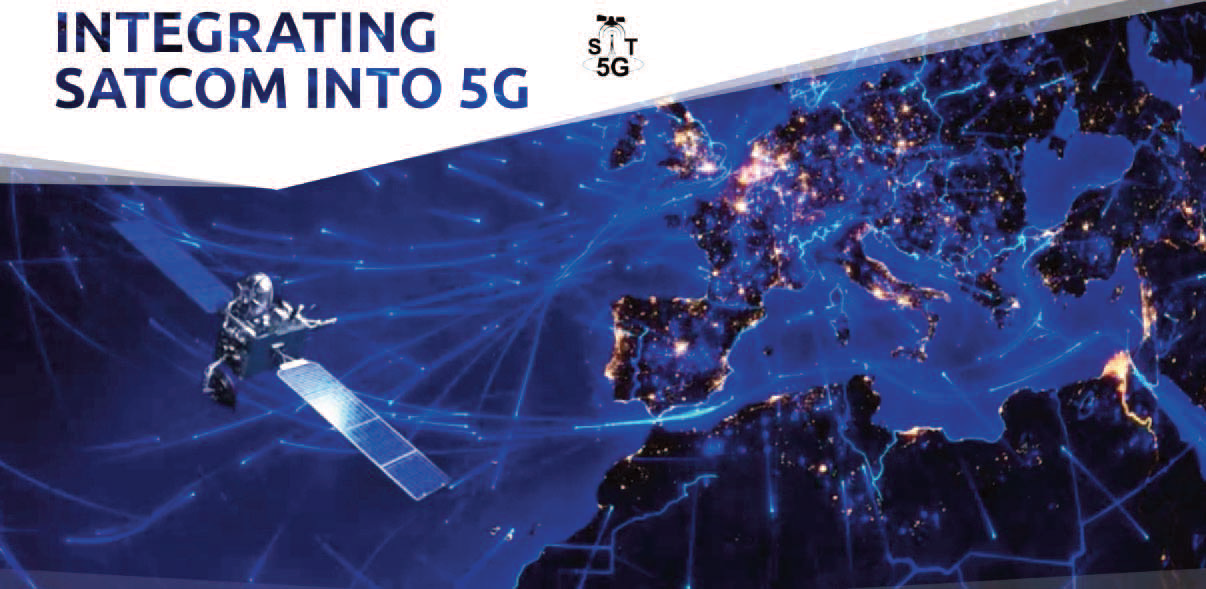
In October, together with Avanti Communications, we enabled the successful integration of a commercially available 5G core network into a live satellite network within the SaT5G project. This marked a major milestone for the Sat5G initiative and the industry as a whole, as it was the first time a live satellite network has been managed and operated using a standard and unmodified commercially available 5G core network.
Several 5G use case demonstrations over live satellite links were performed with satellites carrying out several different tasks. The project undertook research and demonstrated the benefit of satellite technology in delivering content to the network edge.
We have taken our first and very significant steps toward the multi-orbit approach that will define our future as an industry. Our high-performance ground infrastructure has been selected for O3b mPOWER, SES’s next-generation MEO communications system. Pairing our breakthrough ground technology with spacecraft innovations, O3b mPOWER will enable a flexible, low-latency, high-speed, fiber-like experience. Our ground technology is key to optimizing the end-to-end capabilities of the MEO constellation which promises to transform how satellite services are delivered.
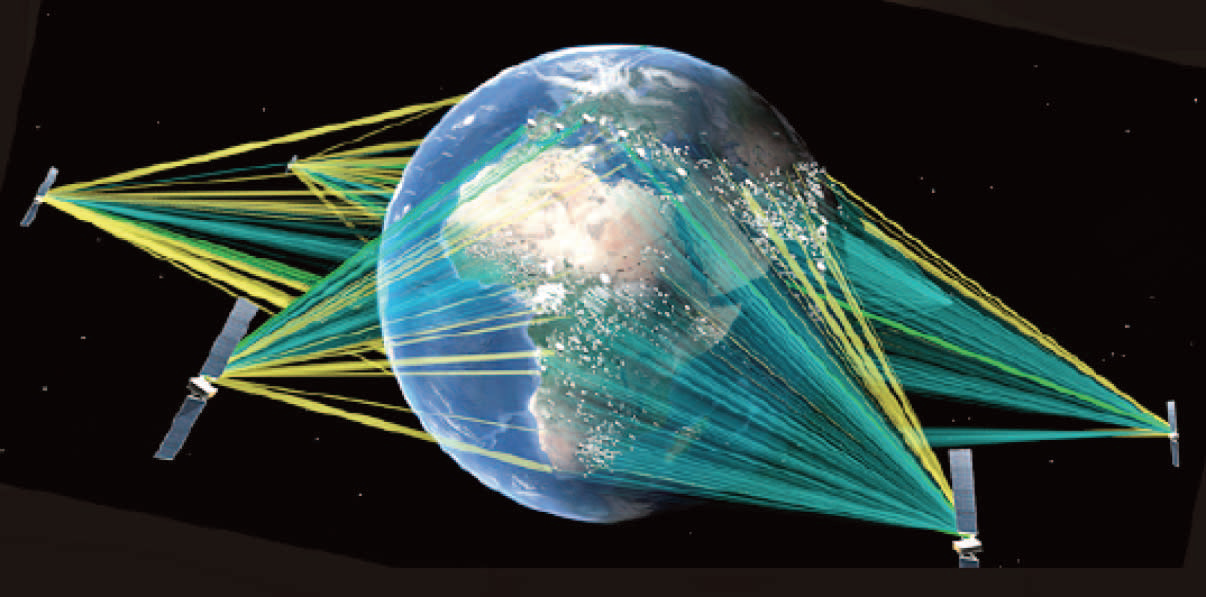
But it’s not just MEO connectivity where we have seen significant developments. We have also made groundbreaking advancements in LEO (Low Earth Orbit), as well. We completed the world’s first Over-the-Air (OTA) testing of our Multi-Frequency Time Division Multiple Access (MF-TDMA) return link on the Telesat Phase-1 LEO satellite. This achievement demonstrated dynamic sharing of bandwidth among multiple terminals within a LEO constellation, a capability that extends the capacity and flexibility of Telesat’s multi-beam beam hopping architecture, and opens up a wide range of use cases for Telesat’s LEO customers in the commercial, government, and defense markets.
The Road Ahead
Though 2020 has been filled with challenges for everyone, there are many reasons to be positive and we will see recovery with markets coming back to 2019 levels in 2021 and 2022. NSR already forecasts long-term potential with SATCOM revenues reaching $26.5 billion by 2029.

Telesat’s LEO constellation graphic.
Some markets will recover rapidly but others, such as the aviation and IFC (Inflight connectivity) will take longer to bounce back to the levels they were at before. However, when they do, they will emerge as an important differentiator.
Technologically, there is much to look forward to and some disruptive technologies are emerging that will shape the future of our industry. Take virtualization and the cloud. As a ground infrastructure provider, we will create the scalability and throughput so that many different services may be used. This will transform the way in which satellites are viewed by the telecommunications industry and how satellites link up to the global fabric of terrestrial communication.
In 2021, we look forward to further enabling our customers and partners in our established, core markets and also to taking our first steps into new ones, opening up a new future of connectivity that can be enjoyed by everyone, everywhere.
www.idirect.net


Author Thomas Van den Driessche is the President and Chief Executive Officer of ST Engineering iDirect.

